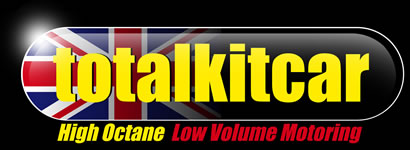STEVE HOLE tells the story of sixties tuning company NERUS ENGINEERING COMPANY Ltd

The area around Rye, Hastings and Bexhill-on-Sea has a rich motorsport history, with the latter even laying claim to being the birthplace of British motorsport.
The heyday for the area was the sixties. We often talk about the ‘M40 corridor’ being the UK’s F1 hotbed, well this corner of East Sussex was its counterpart some sixty years ago.
Harry Weslake’s engineering company helped put Rye on the motorsport map with his work for Bentley, Austin, Jaguar and the JWA Ford GT40 Mk1. Setting up his operation in the Cinque Port in the mid-forties, Weslake was commissioned by the Norton motorcycle company to help improve the gas flow on the Manx engine.
When he worked for Weslake, Ron Valentine develop the 500cc pushed engine that dominated speedway and grass track racing for many years.
Then there was their F1 involvement, initially with Vanwall, using his skill with cylinder head design and performance. The high point was his work with Dan Gurney’s All American Racers Racing Team, with the Gurney Weslake V12 engine. Gurney’s UK arm was also based in Rye.
Another incredibly important company to the area’s automotive and motorsport history, was Frank Nicholls’ Elva Cars first in Pevensey, then in Bexhill and finally in Hastings.
Much as Lotus spawned hundreds of artisan engineering companies set up by ex-employees in North London and latterly Norfolk, so it was that Elva had the same albeit on a slightly smaller scale, effect.
Companies such as AJ Barnard Engineering, Rytune Engineering, Marchant & Cox and the subject of this feature Nerus Engineering can all trace their lineage directly back to Elva and/or Weslake Research & Development.
Another big player in this area was Rother Iron Works. Their name implies the nature of their work, but they diversified quite a lot. They could trace their origins back to 1866 with a lot of their work concerned with the marine industry unsurprising given their location.
They set up their first subsidiary in 1930 when they started to produce bricks and tiles under the Nerus name. They’d revisit that name again in the sixties. For interest, the origins of the name? It was simply the chairman Mr Suren’s name spelt backwards!
Rother Iron Works had its own foundry and an extensively equipped machine shop so decided to develop its activities, further.
They recruited Lancastrian Frank Webb as technical boffin who had previously been involved with Lagonda, managed the HWM F2 team and made his name working as Harry Weslake’s right-hand man for several years. He ran Nerus with director, Conolly Tuke.
He then spent three years working for Winchelsea-based Rytune, with Frank Nichols of Elva fame. It was Rytune that produced the Scorpion Formula Junior car from 1959.
When Webb joined Nerus in 1961 they became a very important player in the sixties tuning market. Rother Iron Works had already re-established Nerus to produce flexible driveshafts but under Webb’s leadership, they expanded into engine tuning parts, camshafts, valves, springs and engine modifications. They would sell parts in kit packages or individually and also had demonstrator vehicles to show potential customers and journalists of the day what they could do.
With Webb’s considerable cylinder head skills, they became very sought after for this work in particular. By 1966, they were sending out over 100 modified cylinder heads every month, while they were also big in the field of airflow hence porting and polishing.
Nerus also got the job to do BMW’s engine mods for Vosper powerboats and also Frank Nichols’ Bavarian-powered racers.
Parent company Rother Iron Works utilised their foundry by casting scavenge pumps for Nerus’ BMW engines, while they also put their home-made airflow machine to work regularly, too.
They also became very prominent within the A-series tuning world – a very competitive market in the sixties – although would also turn their attention to other engines like the Hillman Imp. For example, they tuned the engine in Vic Phillips’ and Mike Pierce’s homemade motorcycle combination called ‘Impetus’.
Then there were the engines for Imp engine maestro, Alan Fraser’s Fraser Imp and Fraser GT. Their catalogue also covered engines from Ford, Fiat and the BMC/Austin 1800.
I recall reading a lovely old feature on Nerus from the mid-sixties where Frank Webb explained some of his thoughts on the art of engine tuning.
“It’s not the widest bore that gets the best flow of air. If a pipe ends in a sawn-off-type break, it is usually less efficient at conducting air. A narrower piper that has been smoothed out and rounded, is best.”
Webb would first create his work in Plasticine before scaling it up and having Rother Iron produce a sand mould. He really was a master of making engines breathe easier and was one of the UK’s most prominent experts on solving top-end breathing problems.
Nerus typically offered three stages of tune for the engines they catered for, much like their rival engine tuners of the day. They liked to offer what their adverts called ‘package deals’.
As mentioned, they always had demonstrators to show off their prowess, with their Mini demo car, in particular, regularly appearing in magazine articles of the day.
One of their mechanics, invented – and Rother produced it in-house – the pull-out door handle for the Mini.
Another famous speedshop of the sixties, Team Checkpoint (branches in Manchester and London’s Euston!) also became a large player on the South Coast’s tuning scene.
They invested in and ultimately bought out the Camber GT project (I bet they wished they hadn’t pretty sharpish!) and along the way also acquired a couple of other companies in the area, like Rytune.
In the Manchester area, Checkpoint acted as Nerus agents and had their own ‘Nerus- Ford Cortina demo car. Its engine was balanced, it had a mild racing camshaft, stage 2 Nerus cylinder heads and double-valve springs. Another Nerus agent was Westbourne Grove, Notting Hill-based RJV Ltd. Indeed, Checkpoint vacuumed up a few other companies that they dealt with including, Mogram Engineering and ironically, Nerus Engineering. They moved the Nerus operation from their Rye home to Mogram’s HQ just along the coast in St Leonard’s-on-Sea.
I was reading some blurb recently on Nerus’ Imp stage 4 conversion was called the JC Conversion, which gave a whopping 42 per cent, increase in power. That sounds like a dramatic increase and perhaps it was an over-ambitious claim, but Nerus was always regarded as being one of the more conservative when it came to power claims.
The ‘Nerus Imp’ – a fully built Imp with their various menu of mods fitted to it, was priced at £623 (about £9200 allowing for inflation in today’s money). This was a bit pricey, as it cost £55 more than a brand-new Mini Cooper.
It was the same with all their various parts. They never claimed to be the cheapest, but they did have a great reputation for quality.
When Nerus closed its doors, Frank Webb would later turn up working for Cosworth Engineering as works foreman. That may sound like a little bit of a come-down but when you think of the calibre of Cosworth as a company and the work they did – and still do – being Keith Duckworth’s right-hand man who turned the ideas into reality was a pretty important job.
Webb would have had direct involvement and input on some of Cosworth’s classic engines and developments.








